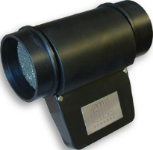In last week's post, "What are Engine Sensors and What Happens When They Fail? Part 1" we defined what an engine sensor was and discussed the function of oxygen, coolant and throttle position sensors as well as the consequences of when these components fail. We'll continue our discussion of engine sensors in this post looking this time at map airflow, crankshaft position, vehicle speed and manifold air pressure sensors. If you notice your engine light has come on, then you may have a problem with one of these sensors. If you need an engine sensor replaced, book an appointment with one of the reliable and trustworthy staff at Hansma Automotive.
CLICK HERE TO CONTACT US TODAY
Call or Text: 519-748-5533
info@hansmaautomotive.com
"Hansma Automotive provides exceptional customer service every time. They communicate in a clear and friendly manner and then deliver great technical service!" - John
Read more Testimonials
Mass Airflow Sensors
The Mass Airflow (MAF) is generally located between the throttle and the air filter housing and its purpose is to measure airflow into the engine. The Powertrain Control Module (PCM) uses this information to help control the fuel mixture. If your sensor is dirty, it can cause inaccurate readings, usually reporting less airflow than is actually occurring. This may result in lean fuel condition, hesitations, and lower performance levels. Cleaning the sensor with an aerosol electronics cleaner may solve the problem. If this doesn't work, you will need to have it replaced. If you are unsure how to do this, contact us and we can do it for you.
Crankshaft Position Sensor
The Crankshaft Position Sensor informs the PCM about the relative position of the crankshaft and the engine's RPMs. The PCM uses this information to control the proper order of spark timing and fuel delivery. It also uses this input to regulate idle speed. Some engines are also equipped with an additional Crankshaft Position sensor to provide the PCM with input about valve timing.
Vehicle Speed Sensor
The Vehicle Speed Sensor (VSS), usually located on the transmission output shaft, reports how fast the vehicle is traveling to the PCM. If your vehicle is equipped with anti lock brakes, then the VSS input from speed sensors monitoring each wheel would also be used by the ABS system. Problems with speed sensors usually occur from faulty wires as opposed to the whole sensor failing. It is important that the speed sensors are functioning properly as the ABS system will not work if it is not receiving good signals from all of its sensors.
Manifold Air Pressure (MAP) Sensor
The Manifold Air Pressure (MAP) sensor measures the difference between the outside atmosphere and the intake vacuum. The PCM uses this information to measure engine load. It then speeds up or slows down the engine timing as necessary. A faulty MAP could be the cause of engine hesitation or fuel mixture and spark timing problems. The sensor's output can be read by a scan tool. If it is reading out of range and there is no apparent vacuum leak in the connection of the sensor to the intake manifold, then the sensor may need to be replaced.
While there are still other engine sensors in your car, those that we have discussed in Part 1 and 2 of this post are some of the more common ones which can affect the smooth running or your vehicle. If you suspect that you have a problem with one of these sensors or you just feel that your vehicle is not performing like it should, come and see one of the professional staff at Hansma Automotive. Most repairs take a few hours or less. You can take advantage of our handy shuttle service while your repair is being done. We are conveniently located at 88 Shoemaker Street in Kitchener, Ontario and we are experts at solving all of your vehicle concerns at a reasonable price.
Sources:
Making Sense of Engine Sensors
Sensors: When to Replace Them
Automotive Engine Sensors
Mass Airflow picture by Gill Sensors (Gillsensors at English Wikipedia)

